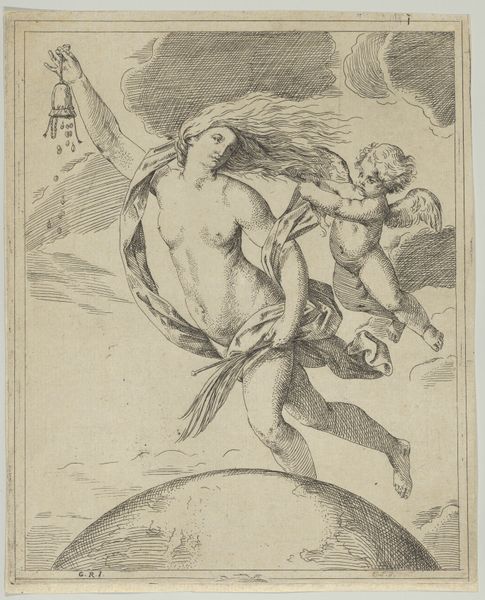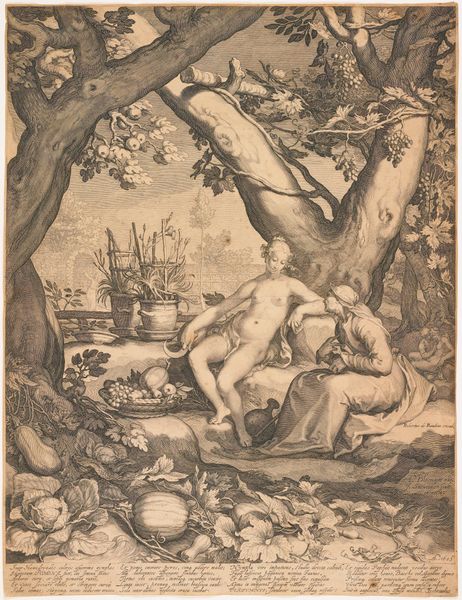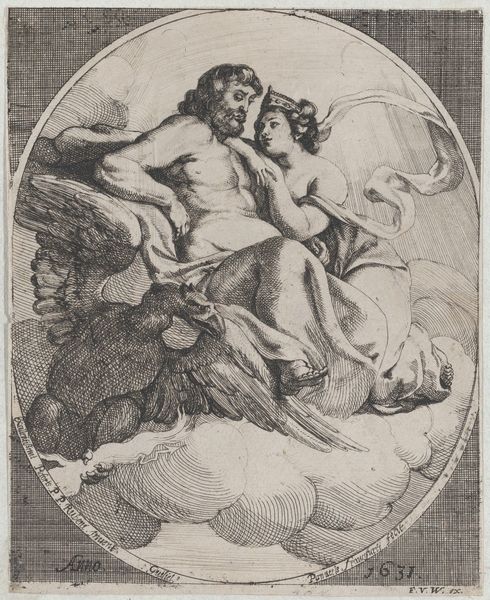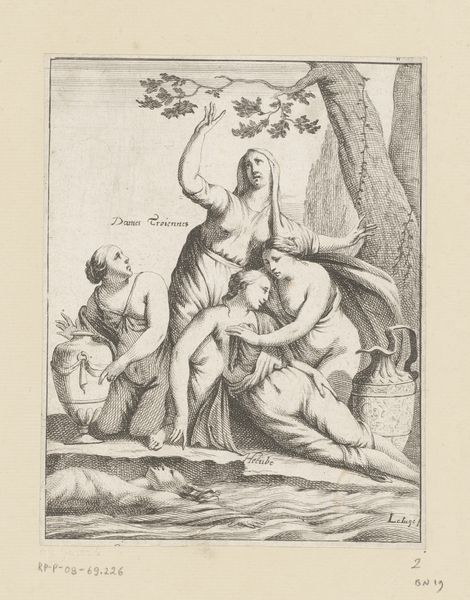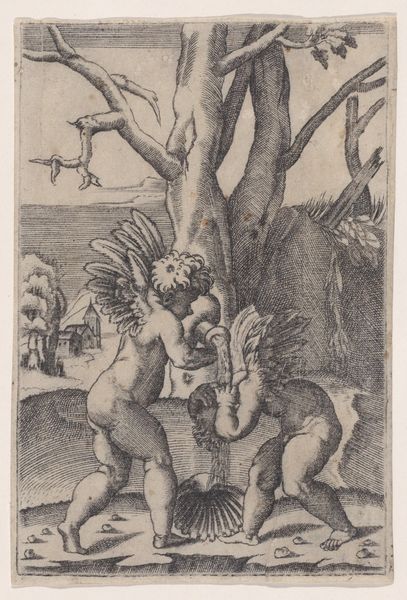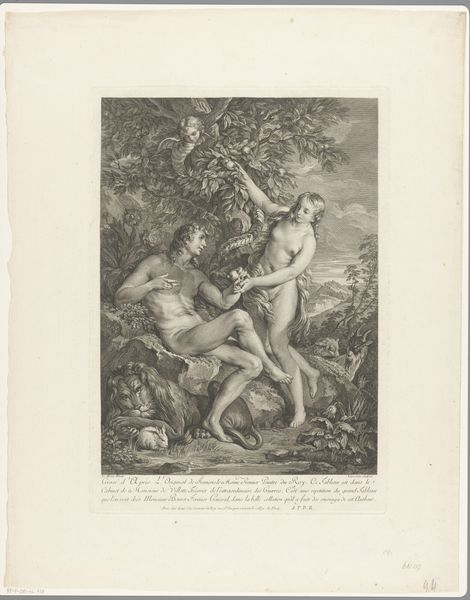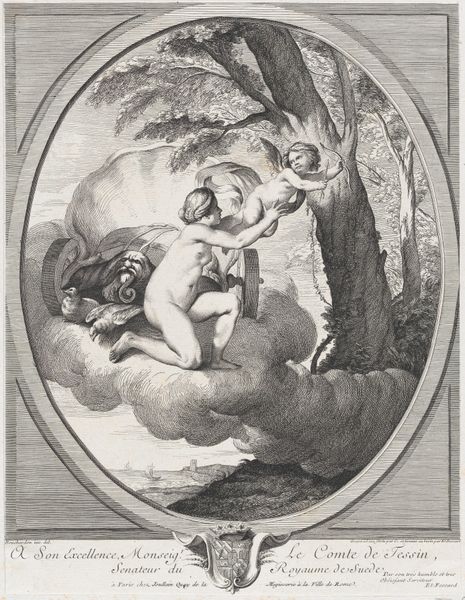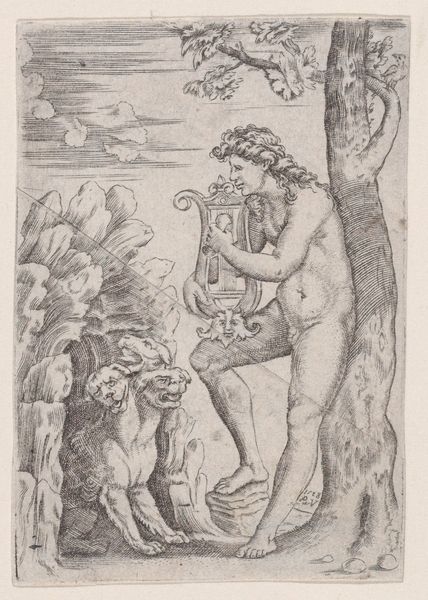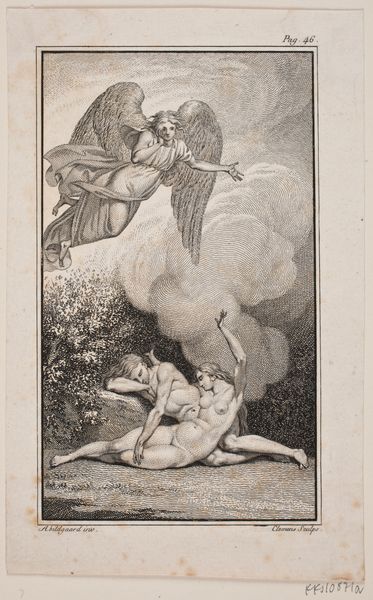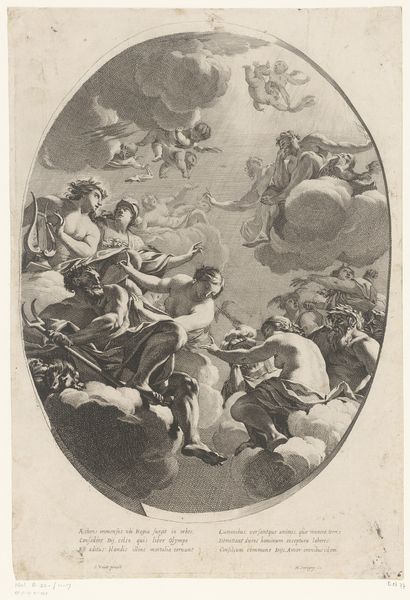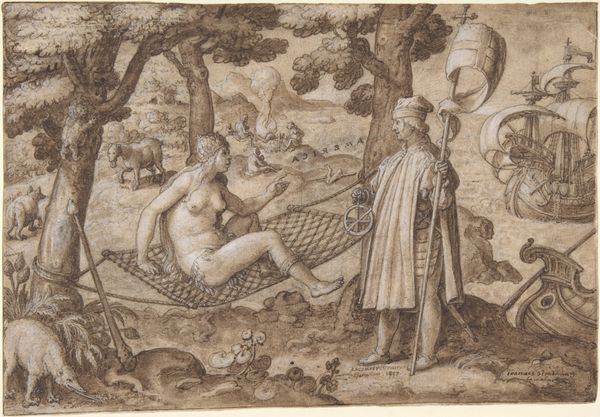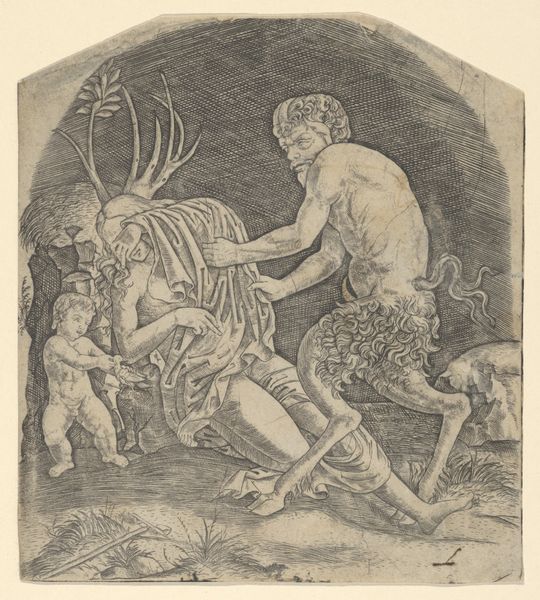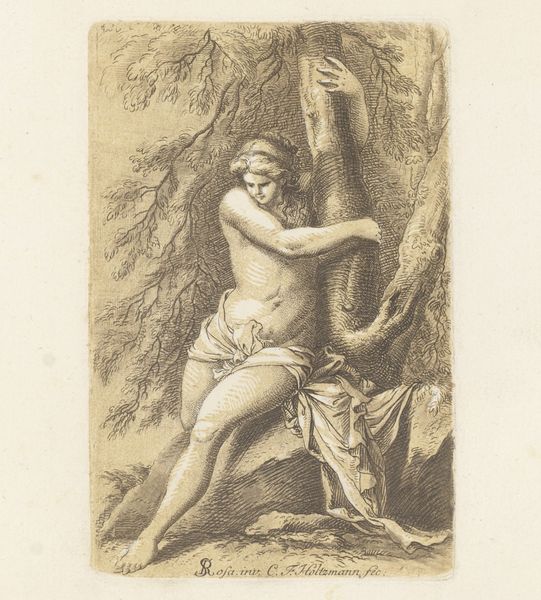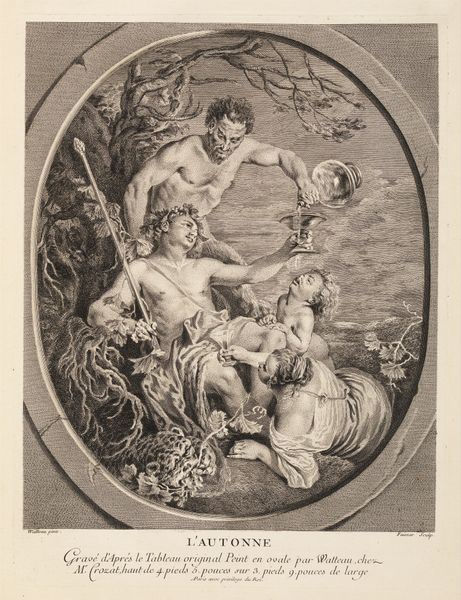
drawing, ink
#
drawing
#
allegory
#
baroque
#
charcoal drawing
#
ink
#
surrealism
#
portrait drawing
#
genre-painting
#
nude
#
portrait art
Dimensions: height 215 mm, width 155 mm
Copyright: Rijks Museum: Open Domain
Editor: This drawing, titled "Venus naast haar wagen op de wolken gezeten," attributed to François Verdier, seems to float right off the page. Done sometime between 1661 and 1730, it's made with ink and charcoal. What strikes me is how earthly Venus seems, even surrounded by clouds. What do you see in this piece? Curator: What I see is a challenge to traditional high art through the materials themselves. Ink and charcoal are readily available materials. But by using them to portray Venus, traditionally a subject of oil paintings and sculptures, Verdier democratizes the goddess. Consider the paper, too—likely handmade, reflecting a particular form of labor and access. How does the seemingly simple act of choosing these materials alter our perception of Venus herself? Editor: That’s fascinating! It never occurred to me to think about the implications of using drawing materials for such a subject. It really does make her seem more...accessible. Curator: Exactly. And notice the details – are those clouds precisely rendered, or more suggestive? It makes you consider the labor of representation itself. High art often aims to obscure its making, to appear effortless. Verdier, through his material choices and technique, invites us to think about the work involved in constructing the image and even constructing ideals of beauty represented by Venus. What does the act of *drawing* a goddess imply about artistic labor during this period? Editor: It sounds like you're saying it kind of undermines the untouchable perfection of Venus by revealing the artistic choices and materials used to depict her? Curator: Precisely! This challenges a clear separation of ‘high’ and ‘low’ forms by displaying what it means to produce her image with common materials, and thus for broader consumption. It also suggests that art isn’t just about divine inspiration, but concrete acts of production. Editor: Wow, I will definitely consider this from now on when thinking about materials! Thank you for opening my eyes to a different point of view. Curator: And thank you for your sharp observations, a great way to think about what materials communicate and make the making process more obvious!
Comments
No comments
Be the first to comment and join the conversation on the ultimate creative platform.
